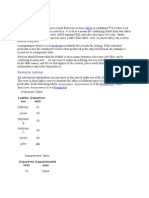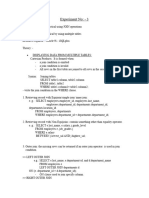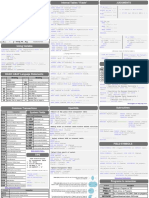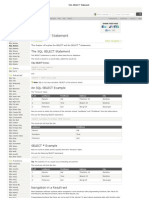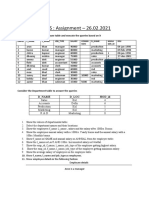0% found this document useful (0 votes)
12 views29 pagesLecture On SQL Joining 2
This document explains how to use SQL joins to query data from multiple tables, detailing various types of joins including cross joins, equijoins, natural joins, and outer joins. It emphasizes the importance of specifying join conditions to avoid Cartesian products and provides examples of SQL syntax for different join types. Additionally, it covers the use of table aliases and the ON clause for improved query performance and clarity.
Uploaded by
wahab balochCopyright
© © All Rights Reserved
We take content rights seriously. If you suspect this is your content, claim it here.
Available Formats
Download as PDF, TXT or read online on Scribd
0% found this document useful (0 votes)
12 views29 pagesLecture On SQL Joining 2
This document explains how to use SQL joins to query data from multiple tables, detailing various types of joins including cross joins, equijoins, natural joins, and outer joins. It emphasizes the importance of specifying join conditions to avoid Cartesian products and provides examples of SQL syntax for different join types. Additionally, it covers the use of table aliases and the ON clause for improved query performance and clarity.
Uploaded by
wahab balochCopyright
© © All Rights Reserved
We take content rights seriously. If you suspect this is your content, claim it here.
Available Formats
Download as PDF, TXT or read online on Scribd
/ 29









































